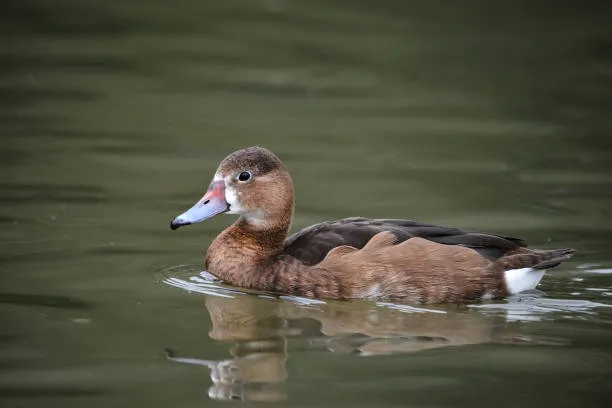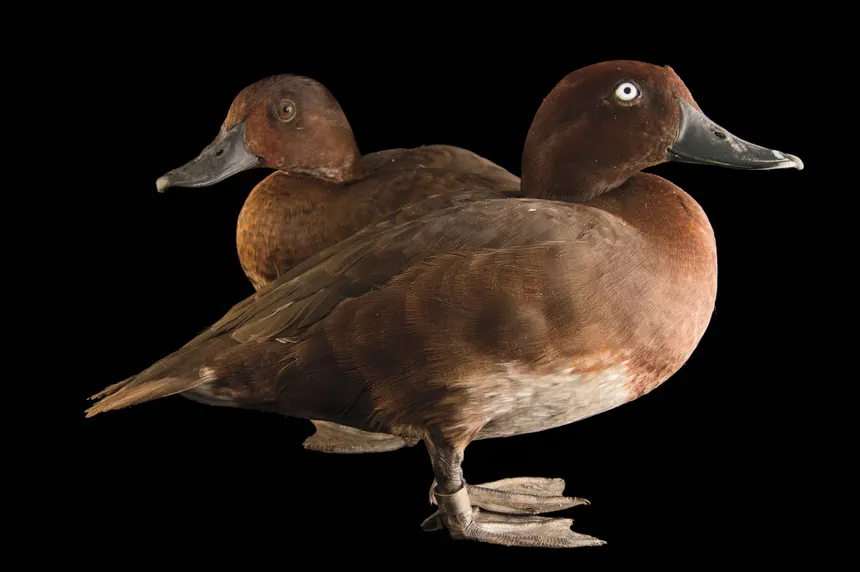The World’s Rarest Duck

Among the rarest animals on the planet, one small, brown duck stands out—the Madagascar pochard. Once thought to be extinct, this elusive waterfowl was rediscovered in 2006 in a remote lake in Madagascar. With fewer than 30 individuals at the time, it earned the distinction of being the rarest duck in the world. What followed was an inspiring story of hope, conservation, and international cooperation.
What Is the Madagascar Pochard?
The Madagascar pochard (Aythya innotata) is a diving duck species endemic to Madagascar. It’s a medium-sized duck with a rich chestnut body, white belly, and striking white eyes (in males). Females are generally duller in color. Like other pochards, it feeds by diving beneath the water’s surface for aquatic plants and invertebrates.
Once Declared Extinct
By the late 1990s, the Madagascar pochard had not been seen in the wild for decades. Most scientists believed it had gone extinct due to habitat loss, invasive species, and human activity. But in 2006, a team of researchers from The Peregrine Fund made a stunning discovery—20 individuals were found living at Lake Matsaborimena, a remote volcanic lake in northern Madagascar.
Why Did It Become So Rare?
The Madagascar pochard’s decline can be traced to several factors:
- Wetland degradation: Conversion of marshes and lakes to rice paddies reduced suitable habitats.
- Introduction of invasive species: Non-native fish like tilapia competed for food or disturbed breeding areas.
- Overfishing and hunting: Human encroachment disrupted the delicate ecosystem.
- Nesting habitat loss: The duck prefers shallow lakes with dense vegetation—an increasingly rare setting.

The Conservation Comeback
Following its rediscovery, conservationists sprang into action. A coalition including Durrell Wildlife Conservation Trust, Wildfowl & Wetlands Trust (WWT), and Madagascar’s Ministry of Environment began a long-term rescue mission.
Key steps included:
- Captive breeding program: Eggs were collected from the wild to raise ducklings in a secure, artificial wetland facility near Antsohihy.
- Habitat research: Scientists studied the ducks’ dietary needs and nesting preferences.
- Lake restoration: They selected Lake Sofia as a suitable release site after years of ecological assessment.
In 2018, 21 captive-bred Madagascar pochards were released into Lake Sofia using floating aviaries that acclimated the ducks to their new environment gradually.
Where Do Things Stand Today?
As of recent reports, over 100 Madagascar pochards now exist, with populations slowly increasing in captivity and in the wild. While the species remains Critically Endangered, its future looks more hopeful than it did two decades ago.
Why the Madagascar Pochard Matters
The Madagascar pochard symbolizes the fragility of island ecosystems and the power of focused conservation. Its survival:
- Offers lessons in habitat restoration
- Shows the importance of captive breeding
- Encourages international cooperation for wildlife protection
It also sheds light on the importance of lesser-known species, which may not capture the spotlight like tigers or elephants but are vital components of biodiversity.

Conclusion
The Madagascar pochard is not just the world’s rarest duck—it is a testament to nature’s resilience when given a second chance. With continued support, it may yet thrive again in its native wetlands, offering hope for many other endangered species across the globe.



